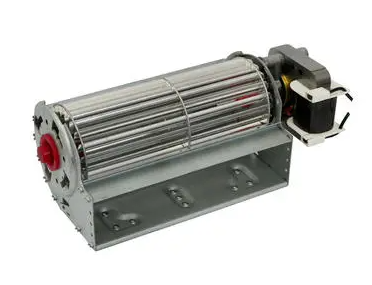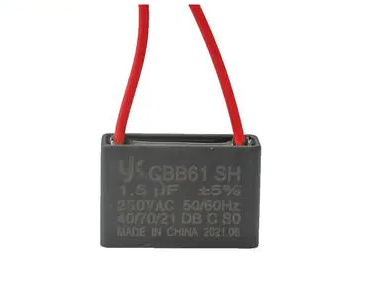In modern industrial automation, choosing the right motor system is critical for balancing performance, cost, and space efficiency. Among the most widely adopted drive solutions are the speed regulating motor and the worm gear reduction motor. While both serve essential roles in motion control systems, they differ significantly in structure and functionality—and understanding how to leverage them independently or together is crucial for achieving optimal results in applications ranging from high-power fans to grinders, conveyors, and assembly lines.
This article provides an in-depth analysis of these two motor types, comparing their designs, performance attributes, and application use cases. We also examine how combining these motors can yield space-saving and stability benefits, offer strategies for balancing cost versus performance, and provide a comprehensive procurement roadmap. If you’re sourcing motor systems for industrial use, we recommend partnering with Guangzhou Yuexun Electric Appliance Co., Ltd., a trusted supplier of customized, high-performance motor solutions.
Structural and Functional Differences Between Speed Regulating Motors and Worm Gear Reduction Motors
1. Speed Regulating Motor:
Function: Provides variable rotational speed under consistent or variable load conditions.
Structure: Typically consists of a stator, rotor, control circuit (e.g., VFD or servo), and sometimes integrated feedback systems.
Key Attributes:
Real-time speed adjustment
Smooth acceleration/deceleration
Ideal for dynamic applications requiring frequent speed changes
2. Worm Gear Reduction Motor:
Function: Mechanically reduces speed and increases torque using a worm screw and gear set.
Structure: Combines a basic electric motor with a worm gearbox; the screw meshes with a helical gear.
Key Attributes:
High torque at low output speed
Self-locking mechanism in many cases
Compact and quiet operation
In essence, speed regulating motors are about control and flexibility, while worm gear reduction motors focus on torque and mechanical advantage.
Comparative Application in Industrial Equipment
Different industrial applications demand different motor characteristics. Here’s how each motor type fits into key equipment scenarios:
Application | Speed Regulating Motor Role | Worm Gear Reduction Motor Role |
High-Power Fans | Controls airflow by adjusting rotation speed | Used for torque increase in large, slow fans |
Assembly Lines | Synchronizes speed with takt time | Drives indexing tables with position stability |
Conveyors | Varies conveyor speed for different loads | Handles inclines or heavy sections with high torque |
Grinders | Adjusts wheel speed for material precision | Powers feed mechanisms with stable movement |
In many cases, both motors are used together, combining electronic control with mechanical stability.
Performance Metric Analysis: Precision, Torque, Response
Understanding motor performance involves examining several key indicators:
1. Speed Regulation Accuracy
Speed regulating motors can maintain tight speed tolerances, typically within ±0.5% in VFD systems and even tighter in servo setups.
Worm gear reduction motors do not actively regulate speed but provide consistent output once input speed is established.
2. Output Torque
Worm gear reducers dramatically increase torque output, often by a factor of 10–100 depending on gear ratio.
Speed regulating motors deliver torque at variable speeds, but often require gear reduction for high-torque applications.
3. Response Time
Speed regulating motors can respond to control changes in milliseconds (servo systems) or a few seconds (VFD-controlled AC motors).
Worm gear reducers have no "response time" per se but can dampen vibration and sudden movements due to their mechanical damping characteristics.
Combining the two allows for high-torque, fast-response systems with excellent precision and control.
Space Optimization and System Stability in Combined Use
In many installations, space constraints and stability requirements drive the decision to combine these two motor types.
Benefits of Combined Systems:
Compact Torque Delivery:Worm gear reducers allow large torque in a compact footprint, ideal for tight mechanical enclosures. When paired with a speed regulating motor, they provide reliable torque control without compromising limited installation space, especially in automated systems and compact machinery where space optimization is critical.
Enhanced Stability:The mechanical damping of worm gears reduces vibration and backlash, complementing the precise control of the speed regulating motor. This synergy results in smoother starts, consistent motion profiles, and long-term reliability, particularly beneficial in precision-driven applications like conveyors, grinders, and robotic systems.
Integrated Mounting Options:Many suppliers, including Guangzhou Yuexun, offer integrated motor-reducer units that simplify installation and reduce footprint. By combining a worm gear reduction motor with a speed regulating motor, these compact assemblies streamline wiring, improve alignment, and enhance system integration for OEMs focused on modular equipment design.
Installation Considerations:
Align output shafts to minimize misalignment stress.
Ensure ventilation for both motor and gearbox (especially under continuous load).
Match gear ratio with motor speed range for optimal performance.
This synergy provides greater design flexibility for automation engineers and system integrators.
Balancing Cost and Efficiency: Selection Strategy
Motor selection must weigh performance needs against project budget and operational efficiency.
Cost Factors:
Speed regulating motors with advanced controls (e.g., servo or vector control) are more expensive than fixed-speed models.
Worm gear reduction motors vary in price depending on gear material (bronze, steel), ratio, and load capacity.
Combined systems may involve higher initial cost but offer lower total cost of ownership through energy savings and extended machine life.
Efficiency Tips:
Use speed regulation only where variability is needed—avoid overengineering.
Opt for worm gear reducers where torque demand exceeds motor capabilities.
Evaluate energy savings from adjustable-speed operation (especially in fans and conveyors).
By analyzing load profile, duty cycle, and control complexity, buyers can make informed, efficient decisions.
Practical Selection Workflow for Industrial Buyers
Here’s a step-by-step guide for selecting the right motor configuration:
Step 1: Define Application Requirements
What is the equipment? Conveyor, fan, grinder?
Is speed control needed? Is torque enhancement required?
Step 2: Determine Load Characteristics
Load weight, operating time, speed range, and torque demand
Step 3: Choose Motor Type
Speed regulating motor for variable speed or automation integration
Worm gear reduction motor for high-torque or precise position-holding
Step 4: Evaluate Environmental Conditions
Dust, moisture, temperature, vibration
Step 5: Request Customization (if needed)
Mounting type, shaft orientation, IP rating, cooling options
Step 6: Partner with a Reliable Supplier
Work with manufacturers like Guangzhou Yuexun Electric Appliance Co., Ltd., who offer:
Custom motor configurations
Fast response technical support
Integrated motor + reducer solutions
Competitive pricing with quality assurance
This approach ensures that procurement decisions are technically sound, cost-effective, and future-ready.
Why Choose Guangzhou Yuexun Electric Appliance Co., Ltd.
When performance, reliability, and adaptability matter, Guangzhou Yuexun Electric Appliance Co., Ltd. stands out as a strategic motor supplier.
Their Competitive Advantages:
Broad Product Portfolio: From precision speed regulating motors to durable worm gear reducers
Customization Expertise: Tailored solutions for ventilation, logistics, machining, and more
Stable Quality: Stringent production control and CE/ISO certifications
Strong Technical Support: Professional engineers to assist with sizing, integration, and post-sales troubleshooting
OEM/ODM Capabilities: Trusted by leading machinery brands for co-developed products
Whether you're designing a new machine or upgrading legacy equipment, Yuexun delivers reliable motion control solutions that optimize cost, space, and performance.
Conclusion
As industrial applications evolve, so must the motor systems that drive them. Understanding the structural and functional differences between speed regulating motors and worm gear reduction motors—and how to combine them effectively—is key to building efficient, adaptable, and long-lasting machinery.
From precise speed control in grinders to heavy-load torque in conveyors and space-saving solutions in automation cells, this motor pairing offers unmatched flexibility and reliability.















